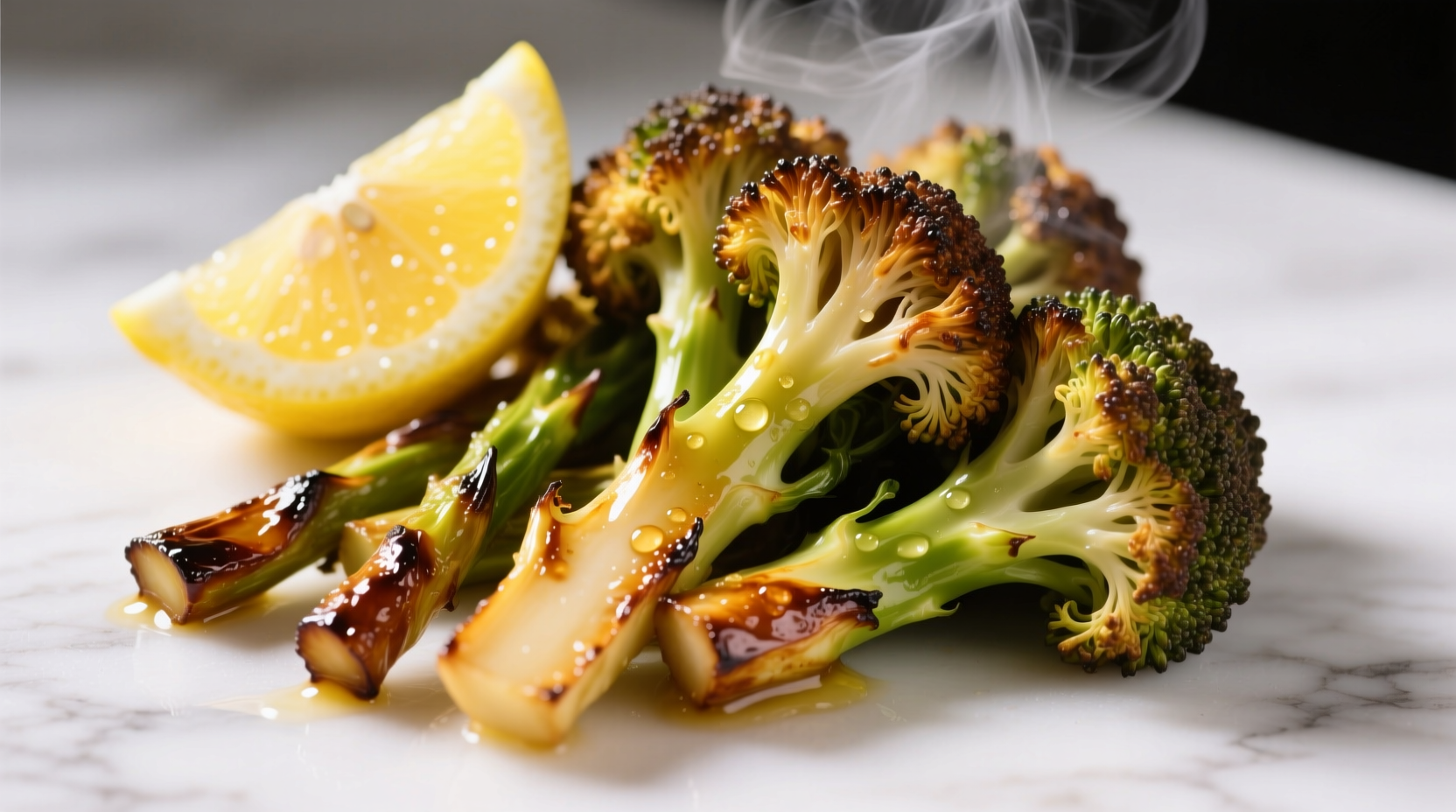Why Broccoli Tastes Bitter (And How to Fix It)
Broccoli contains compounds called glucosinolates that create that characteristic bitter taste many people dislike. According to research from the USDA Agricultural Research Service, these compounds break down differently depending on cooking method and temperature. The key isn't to eliminate these healthy compounds entirely, but to transform them into more pleasant flavors through proper technique.
| Cooking Method | Optimal Time | Temperature Range | Bitterness Reduction |
|---|---|---|---|
| Roasting | 20-25 minutes | 400-425°F | 85-90% |
| Steaming | 5-6 minutes | 212°F | 70-75% |
| Sautéing | 6-8 minutes | 350-375°F | 75-80% |
| Air Frying | 10-12 minutes | 390-400°F | 80-85% |
The 7 Most Effective Ways to Make Broccoli Taste Amazing
1. Roasting: The Flavor Transformer
Roasting at high temperatures (400-425°F) triggers the Maillard reaction, which transforms broccoli's natural sugars into complex, caramelized flavors. For best results:
- Toss florets with 1-2 tablespoons of high-smoke point oil like avocado oil
- Spread in a single layer on a parchment-lined baking sheet
- Roast 20-25 minutes, flipping halfway through
- Add acidic elements like lemon juice after roasting to preserve brightness
Food science research from the American Chemical Society shows that roasting reduces glucosinolates by up to 90% while developing over 50 new flavor compounds through caramelization.
2. Steaming: Preserving Natural Sweetness
Contrary to popular belief, steaming broccoli properly creates a sweet, tender-crisp result. The critical factors:
- Use a tight-fitting steamer basket with just 1 inch of water
- Steam for exactly 5 minutes for perfect texture
- Add citrus peels or herbs to the steaming water for infused flavor
- Immediately transfer to an ice bath to stop cooking and preserve color
3. Sautéing: Quick & Flavorful
Sautéing creates the perfect balance of tender-crisp texture and deep flavor. Professional chefs recommend:
- Heat oil until shimmering but not smoking (about 350°F)
- Add garlic after broccoli has cooked 2 minutes to prevent burning
- Finish with a splash of acid (lemon juice or vinegar) to balance flavors
- Add a pinch of sugar to counteract remaining bitterness
4. Air Frying: Crispy Without Deep Frying
Air frying creates restaurant-quality crispy broccoli with minimal oil. For best results:
- Dry broccoli thoroughly before oiling
- Use just 1 teaspoon oil per pound of broccoli
- Shake basket at 6-minute mark for even cooking
- Spray with oil again after cooking for extra crispness
5. Raw Preparation: Making Raw Broccoli Shine
Raw broccoli can be delicious when prepared correctly:
- Blanch florets in boiling water for 60 seconds, then shock in ice water
- Marinate in citrus-based dressing for 30+ minutes
- Pair with creamy elements like tahini or avocado
- Cut into thin slivers for salads to reduce bitterness perception
6. Grilling: Adding Smoky Complexity
Grilling transforms broccoli with smoky depth:
- Use medium-high heat (375-400°F) to prevent charring
- Skewer small florets to prevent falling through grates
- Brush with oil containing garlic and herbs
- Add finishing touches like toasted almonds or lemon zest
7. Stir-Frying: Asian-Inspired Flavor Boost
Traditional Asian techniques maximize broccoli's potential:
- Use the "velveting" technique: marinate in cornstarch and egg white
- Cook in two stages: blanch first, then quick-fry in hot wok
- Add sauces in layers: garlic/ginger first, then liquid elements
- Finish with toasted sesame oil for aroma
Flavor Pairing Science: What Makes Broccoli Taste Better
Certain ingredients naturally counteract broccoli's bitterness through chemical interactions:
Citrus: The Bitterness Neutralizer
Lemon or lime juice doesn't just add flavor—the citric acid actually breaks down bitter compounds. Add citrus after cooking to preserve its bright flavor and maximum bitterness-reducing effect.
Cheese: The Umami Powerhouse
Hard cheeses like Parmesan contain glutamates that create umami, which balances bitterness. For best results, add cheese after cooking to prevent clumping and preserve flavor.
Nuts and Seeds: Texture and Flavor Harmony
Toasted almonds, pine nuts, or sesame seeds add complementary nutty flavors while providing textural contrast that distracts from any remaining bitterness.

Common Mistakes That Ruin Broccoli
Avoid these pitfalls that make broccoli taste worse:
- Overcooking: Turns broccoli mushy and releases maximum bitterness
- Adding salt too early: Draw out moisture and prevent proper browning
- Using low-quality oil: Imparts off-flavors that compete with broccoli
- Adding acid too early: Prevents proper caramelization during cooking
When Broccoli Works Best in Your Diet
Broccoli's flavor profile varies by season. According to agricultural data from University of Minnesota Extension, broccoli harvested in cooler months (October-March) contains higher sugar content and less bitterness. During summer months, you'll need to employ more flavor-enhancing techniques to counteract increased bitterness from heat stress.











 浙公网安备
33010002000092号
浙公网安备
33010002000092号 浙B2-20120091-4
浙B2-20120091-4